OUR FOCUS AREA

Mero Alaichi, Mero Dhan
Using S&T to Revive Large Cardamom | Strategic Plan | ver 2.0
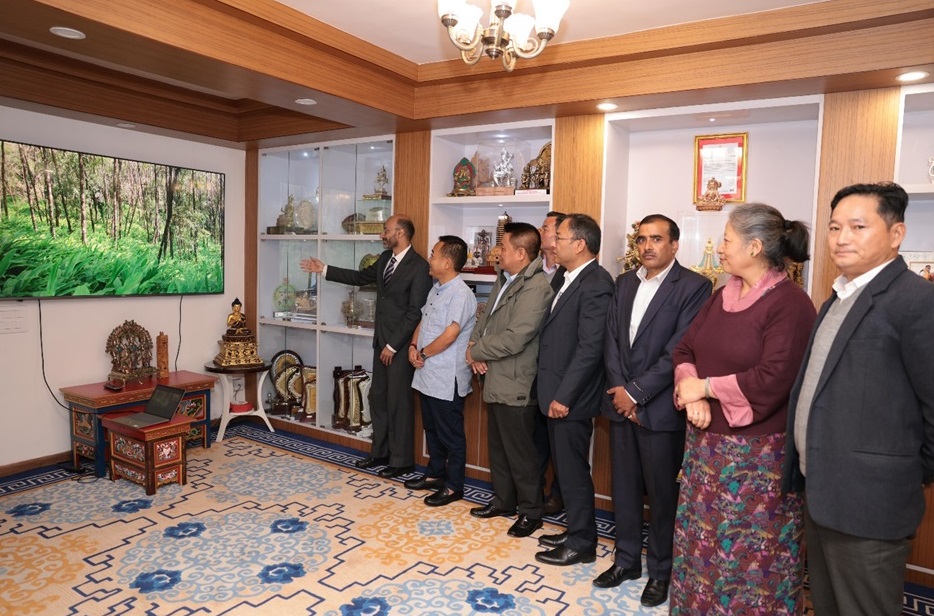
Introduction
1. Background
Large cardamom, a native, high-value, niche cash crop and cultural heritage of Sikkim, has been a vital source of livelihood for farmers. It is the third most valuable spice in the world after saffron and vanilla, with a forecasted market size in 2033 of USD 289 million or INR 2500 crore. Historically, this crop ensured high economic returns and prosperityin Sikkim and was a vital livelihood for the farmers. Sikkim contributed nearly 85% of the national production,making India the leading producer in the world. However, over the past two decades, disease outbreaks, climate change, soil health,and unsustainable practices have severely reduced the crop’s lifespan and production, profoundly impacting rural communities. Disease pressures exacerbated due to climate change have grown into epidemics, particularly fungal diseasessuch as leaf blight and rhizome rot, ravaging the crop.
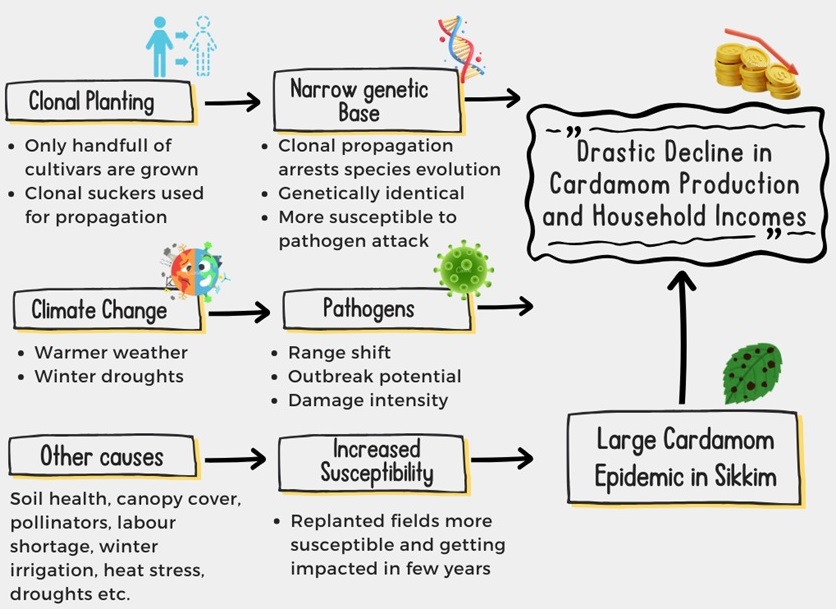
As a result,the productive area under this crop and the production have declined by more than half, translating to an annual loss of about Rs 318 crore in rural incomes. The plant is vegetatively propagated using root suckers for faster returns.However, this clonal multiplication makes the crop especially vulnerable to pathogens and reduces plant vigor due to low genetic variation. Hence, the lifespan of the crop has been reduced from 30 years to about 5-6 years, thus yielding only up to 2-3 harvests before withering away. As a result, Nepal now accounts for 68% of the global production, followed by India and Bhutan. This evidence underscores the urgent need to revive large cardamom cultivation in Sikkim, ensuring sustainable livelihoods for the rural community.
2. Objectives
The “Mero Alaichi, Mero Dhan” (My Cardamom, My Wealth) initiative was conceptualized by the Hon’ble Chief Minister Shri Prem Singh Tamang (Golay) during a high-level meeting with the Department of Science and Technology on October 24, 2024. In this review meeting, the department was directed to use cutting-edge science and technology interventions to control diseases and boost production. Accordingly, the main objectives of this initiative are to:- Strengthen science and technology interventions to tackle the decline of large cardamom.
- Increase the crop's productive lifespan to 10-15 years from the present 5-6 years.
- Develop capacity and infrastructure at the state level to tackle such issues in the future.
3. Proposed strategy
The strategy is three-fold:- Short term (2 years): Field trials of existing disease-tolerant cultivars will be initiated to assess their performance. A baseline survey will also be undertaken to understand the present status of large cardamom.
- Medium term (2-4 years):Biocontrol solutions will be developed to tackle fungal diseases, such as Colletotrichum leaf blight and Fusarium rhizome rot, and viral diseases, such asChirkey and Phurkey.
- Long-term (4-6 years): Genetically improved varieties will be developed using conventional plant breeding andbiotechnology interventions.
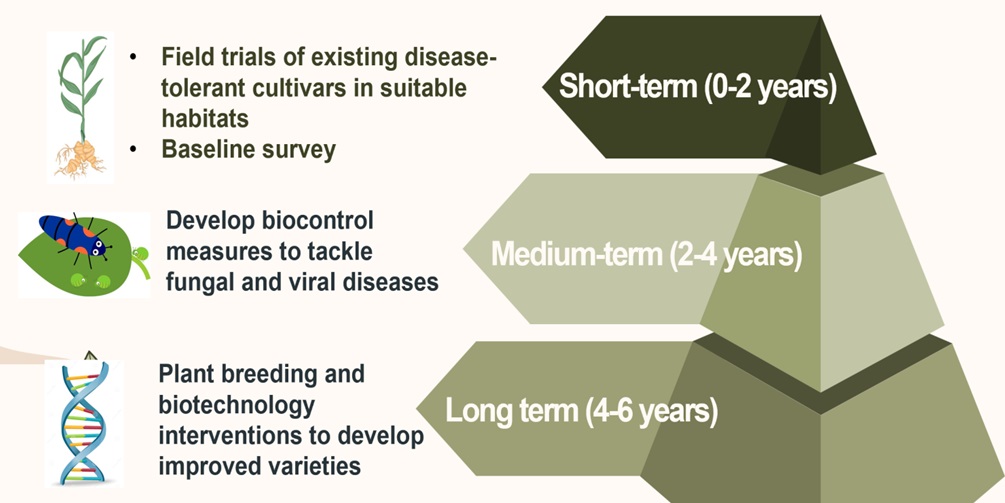
4. Thematic components
The main thematic components of this initiative are protection, innovation, sustainability and partnerships as detailed below:4.1 Protection : Ensuring plant health and safeguarding farmer livelihoods are top priorities. Disease management strategies using environmentally friendly solutions focus on:
- Taking up field trials of disease-tolerant large cardamom varieties to break the cycle of recurring epidemics.
- Utilizing advanced diagnostics for early disease detection and precise pathogen identification such as metagenomics, in vitro pathogenicity assays, PCR and qPCR, etc.
- Pathogenicity studies on fungal pathogens and the role of soil pH in disease incidence.
- Developing biocontrol agents such as antimicrobial peptides, RNA biopesticides, lignin derivatives etc. to combat fungal and viral pathogens and exploring the soil microbiome to develop effective biocontrol agents.
- Baseline survey to assess the present status of large cardamom and to assess what is working and what is not
- Farmer-led research and development by promoting conventional plant breeding to develop improved seed-origin crossbreed plants.
- Development of a reference genome of large cardamom and identification of markers potentially linked to resistance loci
- Leveraging modern breeding techniques, such as mutation breeding, speed breeding, marker-assisted selection, to develop resilient crop varieties.
- Develop microbial probiotics to promote plant growth.
- Promoting agroecological approaches, including intercropping and shade-grown models, to maintain the natural ecosystem balance.
- Promoting good agricultural practices (GAP) to maintain soil and plant health, including effective shade management and hygiene practices.
- Establishing seed-based propagation systems to reduce genetic vulnerability and improve plant diversity.
- Establishing twining programs with national institutes, upgrading existing biotechnology related infrastructure and developing science communication for farmers.
- State level Department of Horticulture, Department of Agriculture, ICAR, Spices Board, and Sikkim University
- National level
- DBT – Department of Biotechnology, Government of India
- ICGEB – International Centre for Genetic Engineering and Biotechnology
- IBSD – Institute of Bioresources and Sustainable Development
- NIPGR – National Institute of Plant Genome Research
- NABI – National Agri-Food Biotechnology Institute
- NCBS – National Centre for Biological Sciences
- TIGS – Tata Institute for Genetics and Society
- ICAR – Indian Council of Agricultural Research
5. Expected outcomes
The expected outcomes of this initiative over the next five to ten years are:- New biocontrol measures developed to tackle fungal and viral diseases
- Development of new cardamom cultivars with improved traits, such as tolerance to disease and droughtpressures
- Enhanced crop lifespan from the present 5-6 years to 12-15 years.
- Restoration of abandoned fields and revival of Sikkim’s status as a leader in large cardamom production.
- Future-readyfarmers with capabilities in plant breeding to develop improved cultivars to tackle future climate change-induced diseases independently
6. Progress Updates

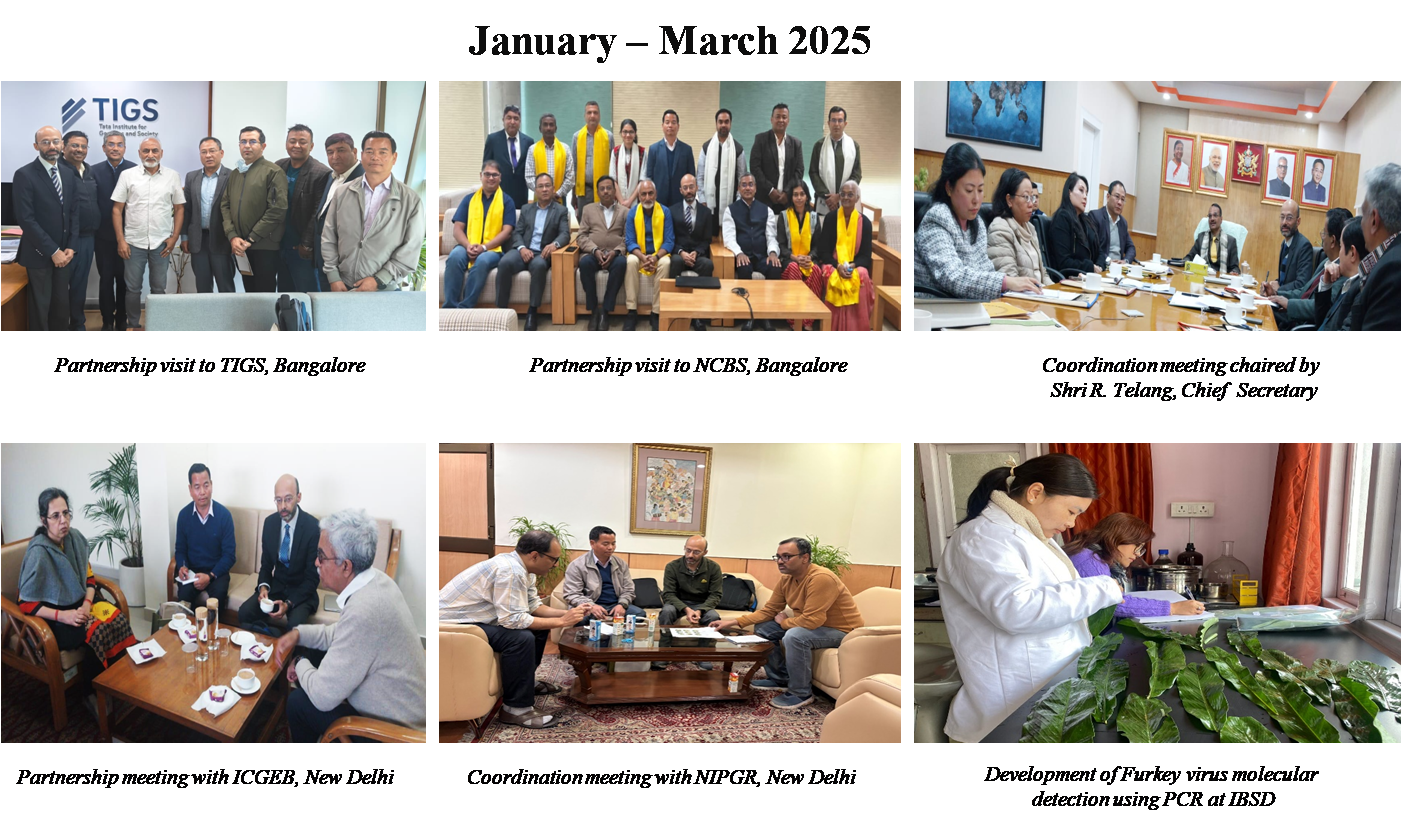
Photographs
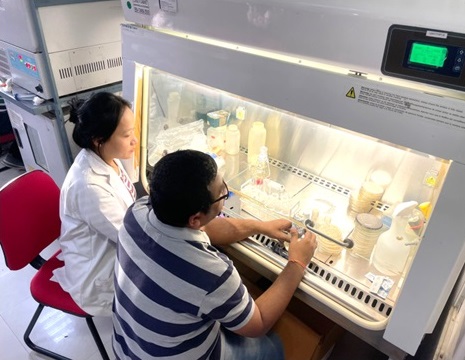
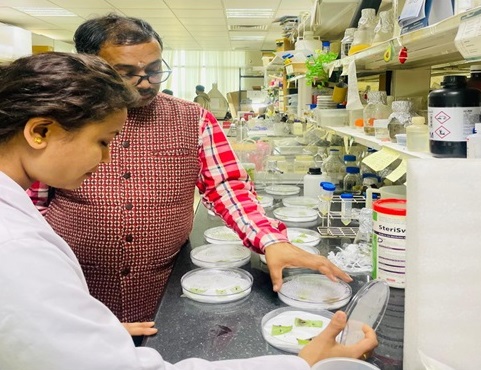
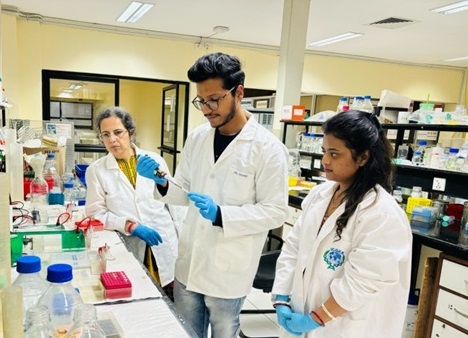
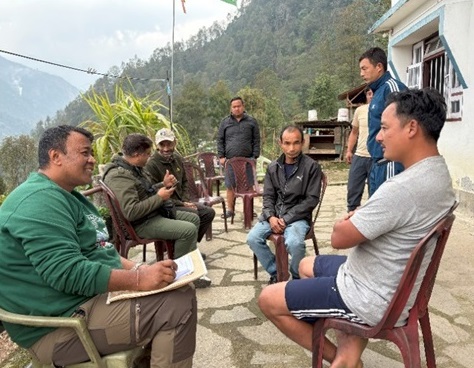

Using S&T to Revive Large Cardamom